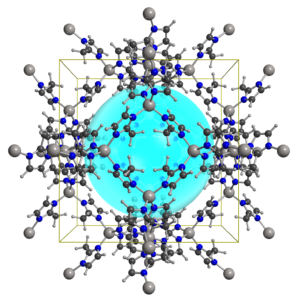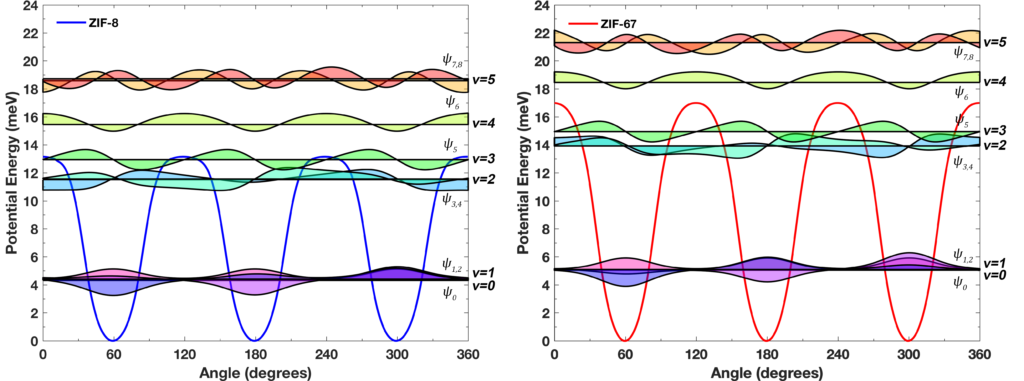 Porous materials are highly promising for a wide number of applications, including gas-storage and sequestration, drug delivery, and catalysis, to name a few. One of the most promising of this class of important materials are metal-organic frameworks (MOFs), which are materials that are made up of a metal cation and an organic linking molecule and often contain a large pore space in their structures. What makes MOFs special is the fact they their structures (and pores) can be readily tuned and controlled by varying either the metal cation or the organic linker, leading to a very rich set of structures and topologies.
Porous materials are highly promising for a wide number of applications, including gas-storage and sequestration, drug delivery, and catalysis, to name a few. One of the most promising of this class of important materials are metal-organic frameworks (MOFs), which are materials that are made up of a metal cation and an organic linking molecule and often contain a large pore space in their structures. What makes MOFs special is the fact they their structures (and pores) can be readily tuned and controlled by varying either the metal cation or the organic linker, leading to a very rich set of structures and topologies.
The structures that MOFs form often lead to really interesting mechanical and chemical properties, as they are often highly flexible. Since it is common for mechanical properties of organic solids to be related to terahertz vibrations, there are lots of cool MOF phenomena that can be explored using terahertz spectroscopy.
In the Ruggiero Lab, we are investigating the link between the mechanical response of MOFs and their low-frequency motions, with the goal of understanding the stabilizing and destabilizing interactions within these solids. We are also very interested in probing the interactions occurring within the pores of these materials, since understanding these phenomena will allow for designing materials to better perform in advanced applications, such as drug loading and delivery, or energy storage devices.
